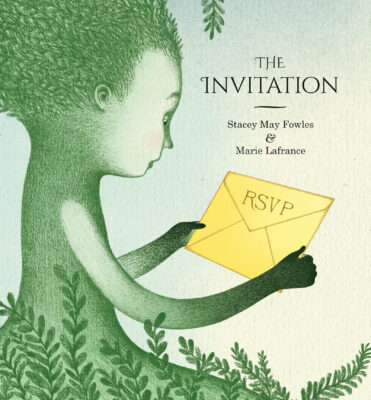Fern is not a fan of surprises, so when an unexpected yellow envelope arrives in her mailbox, she is worried. “Questions clouded her mind. What if something’s happened? Fern wondered. What if it’s bad news? What if, what if—.” With a little help from her imaginative friend, Fawn, she finally gathers the courage to open the envelope and finds an invitation to a special exhibition at the museum. Immediately, she’s overcome with social anxiety.

The Invitation
Stacey May Fowles
Illustrated by Marie Lafrance
Groundwood Books
$19.99
cloth
40pp
9781773066615
Though anxieties are not easily chased away, The Invitation asks kids to trust in their abilities to become comfortable with uncertainty and ambiguity.mRb






0 Comments